We were sitting on the terrace sipping Tulsi tea and chatting as if our encounter had been planned. Earlier that evening I had considered heading down to the Anjuna night market with a small group of friends. The market is famous for its food, everything from Dim Sum to a sprouted salad with a tahini dressing can
Photo: Tulsi Tea
 be found there.As we chatted up a storm, I was glad I made the decision to chill out at home, since Philip passed by on the scoot on a whim. Our discussions seem to be always heady. I rarely meet people as versed in Ashtanga as Philip (or in anything esoteric for that matter). He knows the history, philosophy, as well as the esotheric side of the practice. On top of that Philip is a kindred spirit, and sometimes it seems as if we have non-verbal abilities in our communications, no doubt a gift from our Piscean nature.
be found there.As we chatted up a storm, I was glad I made the decision to chill out at home, since Philip passed by on the scoot on a whim. Our discussions seem to be always heady. I rarely meet people as versed in Ashtanga as Philip (or in anything esoteric for that matter). He knows the history, philosophy, as well as the esotheric side of the practice. On top of that Philip is a kindred spirit, and sometimes it seems as if we have non-verbal abilities in our communications, no doubt a gift from our Piscean nature.
photo: Salad at Anjuna Night Market

 Photo: Anjuna Night Market
Photo: Anjuna Night Market
Earlier last week, Philip showed me Vagador. The drive up there on scooter was far too exciting for my taste. I hung on for dear life as Philip pulled what I would call Kamikaze moves. He drove just like an Indian man, which ironically ends up being the safest way to drive. As we darted in and out of traffic, I squeezed my eyes shut, held my breath as I said a mantra. Despite the drive, I enjoyed the vibe in Vagador. It was very chilled and old school in comparison to Candolim. Philip took me through «Disco Valley» a little valley on the way to the old shala, where hippies and then punks used to party. Finding the old shala took longer than we expected, since a part of the path was overgrown by jungle. It now laid bare and only the flat surface hinted to the foundation of where the old shala used to be. Back in those days this shala used to be the only place to study yoga in all of Goa. Now yoga shalas are a dime a dozen. As Philip once commented,
«You are lucky to end up at the right place for some serious yoga.» I know I’m lucky and feel incredibly grateful to be studying with my teacher, a very enlightened individual with mind blowing knowledge. My teacher and I have a very special rapport and it feels very sacred. I am unable to divulge it. Some things are just to precious to blog about.
There was a lull in our coversation. The silence between Philip and me was as comfortable as an old pair of shoes. Our discussion resumed with the subject of castor oil, which my teacher said I was to do. It’s a powerful detox treatment that needs to be done carefully. I’ve never done it, but I was aware of its different uses. But as we talked about it and wondered out loud about its different properties and nature, Philip took out his pocket book computer. He managed to get some wi-fi - long enough for us to read all about castor oil. I was stunned. Castor beans (technically they are seeds) are remarkable. In addition to their healing properties, they are used in plastics, along with other industrial uses. The food industry uses the seeds to keep mould away from packaged foods and in our bodies the oil also acts as a fumigator, getting rid of parasites, viruses and fungus. Castor oil is also known for it’s beautifying and healing qualities and I wouldn’t be the least bit surprised, if it was part of Cleopatra’s beauty regimen in the way Aloe Vera was.
Photo: A cashew flower at Vagator's Disco Valley photo: Cashew fruit, the black part is where we get the nut

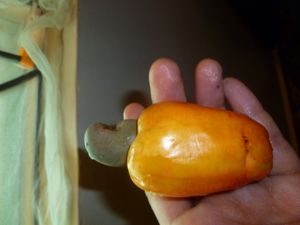 Castor oil has been used as far back as ancient Egypt. In India it is esteemed in Ayurvedic medicine and in early Christian Europe it was known as Palma Christi. The healing properties of this bean merits its holy European name. But there is an insidious side to castor beans: In large doses it’s mortal, even harvesting the seeds causes a range of different problems like nerve damage, which is why the harvest is so problematic. The Fascist in Italy used the oil as a torture tool to breakdown their prisonners, causing many deaths. This dual nature of Castor beans is the quality all powerful medicinal plants have under what the Taoists termed as inferior plants. These are plants, which are so powerful that they are only to be used sparingly and in small quantities for a short time to strenghten the body. Photo: Tamarind, Thanks to the tree in Candolim for all the fruit
Castor oil has been used as far back as ancient Egypt. In India it is esteemed in Ayurvedic medicine and in early Christian Europe it was known as Palma Christi. The healing properties of this bean merits its holy European name. But there is an insidious side to castor beans: In large doses it’s mortal, even harvesting the seeds causes a range of different problems like nerve damage, which is why the harvest is so problematic. The Fascist in Italy used the oil as a torture tool to breakdown their prisonners, causing many deaths. This dual nature of Castor beans is the quality all powerful medicinal plants have under what the Taoists termed as inferior plants. These are plants, which are so powerful that they are only to be used sparingly and in small quantities for a short time to strenghten the body. Photo: Tamarind, Thanks to the tree in Candolim for all the fruit
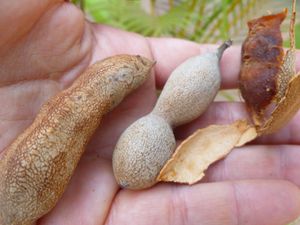
The famous pschychic Edgar Cayce talked about hot castor compresses, for painful areas. I’ve never done it and reading up on it it seems to be an old 'folk' remedy. To make a hot compress you need to soak some fabric in the oil. After you wrap it around the troubled spot and finally add a hot compress on it for a few minutes. It’s apparently very soothing for soreness or troubled skin spots. I’ve tried finding castor oil in Paris, to no avail. If anyone out there knows of a place, where we can find castor oil, please drop me a line.

Photo: A perfect 5 pointed star, sacred feminine symbol
I met Night Queen (after the flower) through Philip, though everyone pretty much calls her Queenie. Queenie and her husband live in Anjuna. Their home is simple but there’s something old world about it. (I could easily picture Somerset Maugham sitting on one of the rattan chairs sipping darjeeling). Queenie putters about in the kitchen a lot. She always seemed busy taking care of others, especially her twelve dogs, all of whom were abused street dogs. The first time we met, we didn’t get a chance to talk until Philip and I were ensconced on the bed and fooling around with the water pipe. I was then staring at the beautiful artefacts that were sitting on a 1970’s style cabinet. There were several Asian bronze statues, an unusual Indian sculpture with turqouise and coral inlays, and a bronze statue of a pixie, making the place feel oddly Byronic. Queenie walked into the bedroom. I followed her slow yet deliberate movements with my eyes and watched her put away some sheets. She resumed her strut to the door and without missing a beat twisted the unusual Indian sculpture so that it kept turning, revealing a play of colour between the red and the blue inlays.  Photo: A camera shy Philip in Vagator
Photo: A camera shy Philip in Vagator
«What is that?» I asked loud enough for Queenie to stop in her tracks. She turned around, revealing a sheepish look on her pale face. Had I not known that Queenie was originally from Rajastan, I would have taken her for a European. She then started rolling a cigarette with the same slow yet controlled movements and told me that the sculputre was a lazyman’s prayer wheel.
 Photo: William and I at Baga
Photo: William and I at Baga
Over the ensuing visits I would get to spend more time with Queenie and learn a bit about her life. It’s rare to come across someone who has lived such critical points in our collective consciousness. One afternoon we started talking music. I learnt that she had been a punk and had lived in Camden with her husband back in the late seventies and early eighties. Not only was she part of the punk movement, but she lived a door down from Marianne Faithful. Who knows what other artists Queenie frequented. But as I heard some of her stories, I had trouble seeing her as a punk. Queenie's hazel eyes sparkled with love and you felt the nurture and generosity in her. But despite it all, I realised that there was something inexplicably hard about Queenie. I guess living in squats and making your way in the world can at times do that to people.
I met with Philip on Sunday. We spent some time at Vagator and South Anjuna, which used to be called Eddy’s beach. (Eddy was one of the first ‘heads’ to move to Goa. Goan head or head is what locals name the foreigners who moved here in the 1960’s or anyone who has been living in Goa for a long time). Although we weren’t peckish, we headed to the Whole Bean to see the menu and then placed our order for delivery. (All they are missing is a raw dip of some sort to go along with a mostly raw menu).
We then drove up to Queenie’s and had a cup of tea with her in Philip’s bedroom. At one point Yass told me about her history. She came from an old Rajastani family with a history dating back to the 13th Century. Her family continues to be one of the most powerful families in India and with the clout comes much privilige. A retinue of Cadillacs driving on dirt roads, elaborate parties, super powers to bend all laws, a household with forty servants, were some of the glimpses I caught of Queenie's former life as she narrated snippets of it to me during tea. 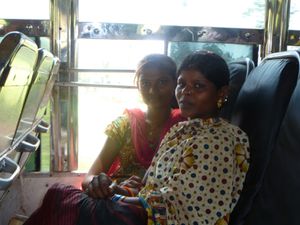
Queenie spent time in Pune and hung out with Osho’s community. She never would attend any of his satsangs nor would she wear red, the colour Osho’s staff wanted her to wear. But every morning without fail she was at the gate of Osho’s compounds, because she wanted to eat a croissant. I can just imagine how this must have irritated certain of Osho's followers.
«But why didn’t you ever attend a satsang?» I asked amazed by her indifference.
«I grew up with all of that. I learnt Hindi and Sanskrit.» Queenie had a private tutor, who taught her many slokas and the philosophy that went with it. She wasn't intrigued by Osho the way Westerners were.
She also ended up living in what could be termed as the Osho ghetto in Pune. She befriended all of the high ranking staff members and knew the mechanics of the organisation. I listened with surprise at some of the things she told me the staff did. It sounded mad, almost fabricated. But having spent time in India and with yogis, I’m aware of some of the craziness that goes on. Regardless of the strange tales she told me about Osho and the organisation, Osho was part of a generation that started the awakening process on the planet.
«Why do you think we don’t have a figure as big as Osho for our generation?» I asked. Of course there is Gurumayi, Amma and a countless of other SadhGurus for our generation. But Osho was truly part of the counter culture movement of the 1960’s, and generation X has no true figure head for our counter culture.
Photo:Right-The streets of Mapusa
 Photo:Left- The colonial past in Calangute
Photo:Left- The colonial past in Calangute
«There’s a massive awakening happening on the planet. We are the «crazies» who need to do the work. We don’t need a guru now. Back then yes, but not now.»
Her reply startled me. Her outlook was simple and straightforward. I agreed with her, but at the same time I also believe that having a SadhGuru is pure karmic merit. Not everyone gets a teacher like Gurumayi or Amma in their lives, not everyone gets them, and that’s ok. We all get what we need for our awakening to unfold.
Have a Magical Week, Live for Love, Arletty Abady
NB- Check out the Boris Lauser Festival I'm organsing in June!



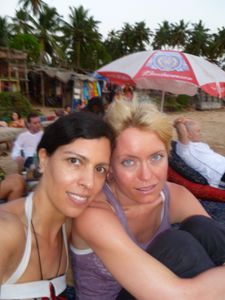 More than half of the Ashtangis left on Monday. Now there’s one shift at the shala, which means everyone is practicing by 5am. I’m having a bit of a challenge with the new time slot. And I’m sore. As my teacher back home once jested, «This isn’t Mysore, this is I’m
More than half of the Ashtangis left on Monday. Now there’s one shift at the shala, which means everyone is practicing by 5am. I’m having a bit of a challenge with the new time slot. And I’m sore. As my teacher back home once jested, «This isn’t Mysore, this is I’m roads or even near a beach. I’m disturbed by it and I’m aware that I’m contributing to it as much as everyone else. During the monsoon period the rubbish problem excacerbates most of the airborne diseases. Philip, a long time Ashtangi, who’s studied pretty much with the who is who of Ashtanga, and has been living in India on-and-of-again for the last twenty years, told me about the different recycling programmes in India.
roads or even near a beach. I’m disturbed by it and I’m aware that I’m contributing to it as much as everyone else. During the monsoon period the rubbish problem excacerbates most of the airborne diseases. Philip, a long time Ashtangi, who’s studied pretty much with the who is who of Ashtanga, and has been living in India on-and-of-again for the last twenty years, told me about the different recycling programmes in India.


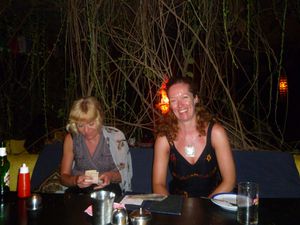



 «East is East and West is West, and never the twain shall meet.» Rudyard Kipling over estimated the power of yoga, mantras and the hippie movement on the West. India in turn has also been enriched by Western concepts and approaches, notably women’s rights and technology. But just like yoga has become a watered down billion dolllar commercial scheme for corporations in the West, our exports to India have also taken
«East is East and West is West, and never the twain shall meet.» Rudyard Kipling over estimated the power of yoga, mantras and the hippie movement on the West. India in turn has also been enriched by Western concepts and approaches, notably women’s rights and technology. But just like yoga has become a watered down billion dolllar commercial scheme for corporations in the West, our exports to India have also taken







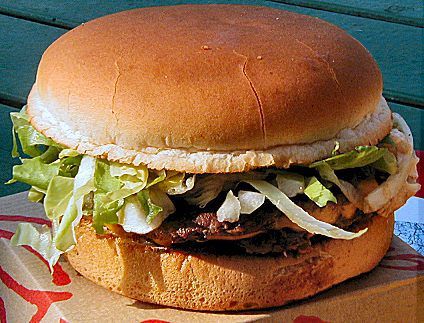
 and within a few years had an operation of 10,000 chickens, which seemed to flourish in tight quarters. By now this tactic is used for all land animals, including fish. I knew all about the way poultry, pigs and cows were treated by the industry, but I was stunned to learn how farmed fish are raised and how study after study proves that they suffer immensely. In the last three years more studies have been undertaken to understand the physiology and mental capacities of fish than in the last 60 years. We simply don’t understand these creatures, including dolphins and wales. And it turns out that even those deemed less sophisticated by our species have very complex nervous systems and mental capacities, and the lives they lead in captivity (aka a fish farm) is horrendous; it makes exotic fish aquariums seem like the ultimate accomodation for any creature.
and within a few years had an operation of 10,000 chickens, which seemed to flourish in tight quarters. By now this tactic is used for all land animals, including fish. I knew all about the way poultry, pigs and cows were treated by the industry, but I was stunned to learn how farmed fish are raised and how study after study proves that they suffer immensely. In the last three years more studies have been undertaken to understand the physiology and mental capacities of fish than in the last 60 years. We simply don’t understand these creatures, including dolphins and wales. And it turns out that even those deemed less sophisticated by our species have very complex nervous systems and mental capacities, and the lives they lead in captivity (aka a fish farm) is horrendous; it makes exotic fish aquariums seem like the ultimate accomodation for any creature. 


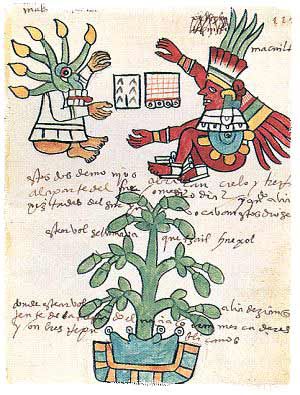
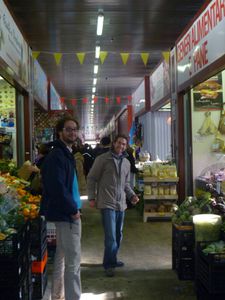
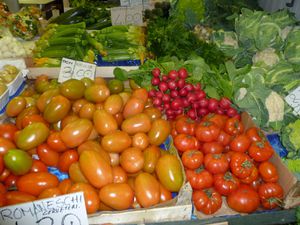 «Why Italy as opposed to France?» friends asked. Italy has managed to preserve much of its old agricultural ways and it’s one of the most organic oriented countries in Europe (most of France’s organic produce comes from Italy). Their reluctance to jump on to the Green Revolution bandwagon back in the 1970’s may very well be due to their complicated bureaucracy (and perhaps even corruption). Or it may well be due to their suspicions that there was something terribly wrong with the way most of the industrialised nations dealt with their food. Italians in general are the biggest food connaisseurs, when it comes to quality, materia prima. (I don’t think that’s the case anymore with the French, whose palate has been distorted by transformed foods like Picard). Italy is a raw foodists wet dream and that's putting it mildly.
«Why Italy as opposed to France?» friends asked. Italy has managed to preserve much of its old agricultural ways and it’s one of the most organic oriented countries in Europe (most of France’s organic produce comes from Italy). Their reluctance to jump on to the Green Revolution bandwagon back in the 1970’s may very well be due to their complicated bureaucracy (and perhaps even corruption). Or it may well be due to their suspicions that there was something terribly wrong with the way most of the industrialised nations dealt with their food. Italians in general are the biggest food connaisseurs, when it comes to quality, materia prima. (I don’t think that’s the case anymore with the French, whose palate has been distorted by transformed foods like Picard). Italy is a raw foodists wet dream and that's putting it mildly.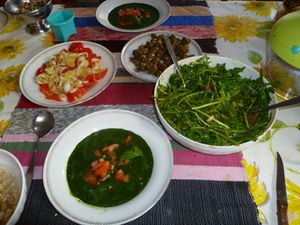

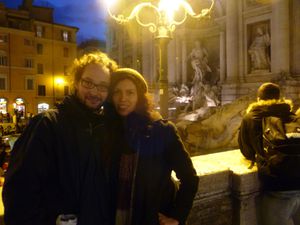
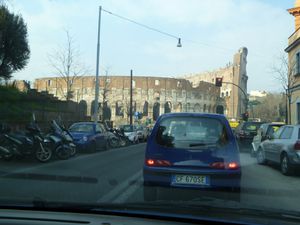
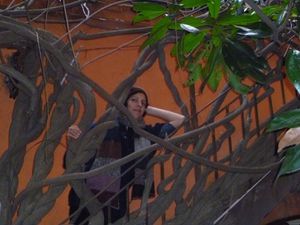 (An amazing tree growing in a courtyard in Rome)
(An amazing tree growing in a courtyard in Rome)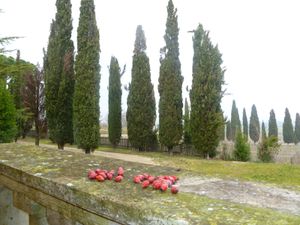
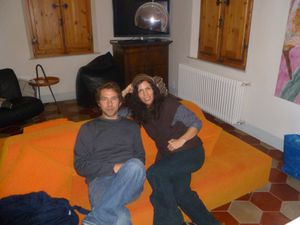


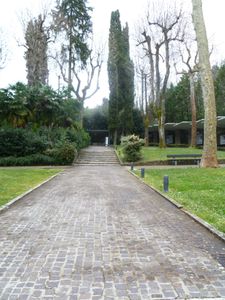
 During the trip, we prepared raw feasts thanks to Matteo’s juicer and high-powered blender, allowing me to concoct yummilicious meals due to the incredible quality of the food we found. (Even supermarket food is superior in quality to what we get in France). The guys not only loved the food and claimed they didn’t miss the pasta or pizza (which they eventually ate on our last day in Italy), but they proved to be great kitchen assistants and spoiled me by doing the dishes. They also picked out some great bottles of wines to go with our meals. (I think I have a fondness for Chianti).
During the trip, we prepared raw feasts thanks to Matteo’s juicer and high-powered blender, allowing me to concoct yummilicious meals due to the incredible quality of the food we found. (Even supermarket food is superior in quality to what we get in France). The guys not only loved the food and claimed they didn’t miss the pasta or pizza (which they eventually ate on our last day in Italy), but they proved to be great kitchen assistants and spoiled me by doing the dishes. They also picked out some great bottles of wines to go with our meals. (I think I have a fondness for Chianti).
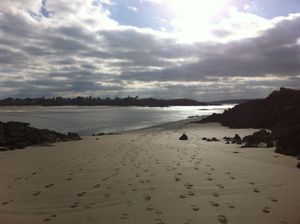
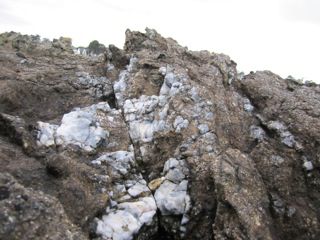 treasures. We even found ourselves sitting on top of boulders made of pale blue quartz, though their beauty was camouflaged with a thick layer of black sediment. I could feel the boulders breathing and at times I thought they were sighing, prompting the
treasures. We even found ourselves sitting on top of boulders made of pale blue quartz, though their beauty was camouflaged with a thick layer of black sediment. I could feel the boulders breathing and at times I thought they were sighing, prompting the
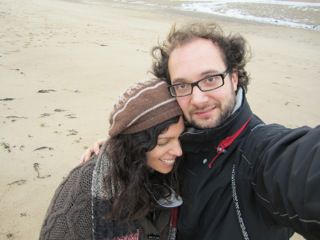 place in our forests, we don't want to wipe them out," one of the hunters said to a journalist. Hunters are protesting hunting? Paul and I looked at each other and laughed. Who says the world isn't changing? It ain't over till the fat lady sings. This planet we're living on is in the midst of a serious
place in our forests, we don't want to wipe them out," one of the hunters said to a journalist. Hunters are protesting hunting? Paul and I looked at each other and laughed. Who says the world isn't changing? It ain't over till the fat lady sings. This planet we're living on is in the midst of a serious 